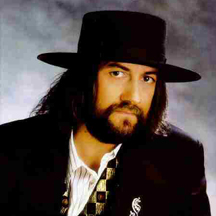MICK FLEETWOOD 
John Mayall’s band was a revolving door of famous British musicians; but even more remarkably, bandmembers who left John Mayall & the Bluesbreakers often helped form other rock bands. For instance, shortly after Eric Clapton left for good, John Mayall & the Bluesbreakers consisted of John Mayall plus three of the founding members of Fleetwood Mac: Peter Green, John McVie, and Mick Fleetwood.
(May 2014)
* * *
The new direction for Fleetwood Mac was not limited to personnel changes or new musical experimentation; this has been common in bands long before rock and roll came along. Fleetwood Mac relocated to Los Angeles in the mid-1970’s; also, Lindsey Buckingham and Stevie Nicks were Americans. Thus, it is difficult to know even how to define the band. Wikipedia calls them “a British-American rock band formed in 1967 in London”, but more than a few comments in the Wikipedia “Talk” section grumble about even calling their latter-day music “rock”. In Allmusic, their article starts off: “While most bands undergo a number of changes over the course of their careers, few groups experienced such radical stylistic changes as Fleetwood Mac. Initially conceived as a hard-edged British blues combo in the late ’60s, the band gradually evolved into a polished pop/rock act over the course of a decade. Throughout all of their incarnations, the only consistent members of Fleetwood Mac were drummer Mick Fleetwood and bassist John McVie – the rhythm section that provided the band with its name.”
(June 2014) |